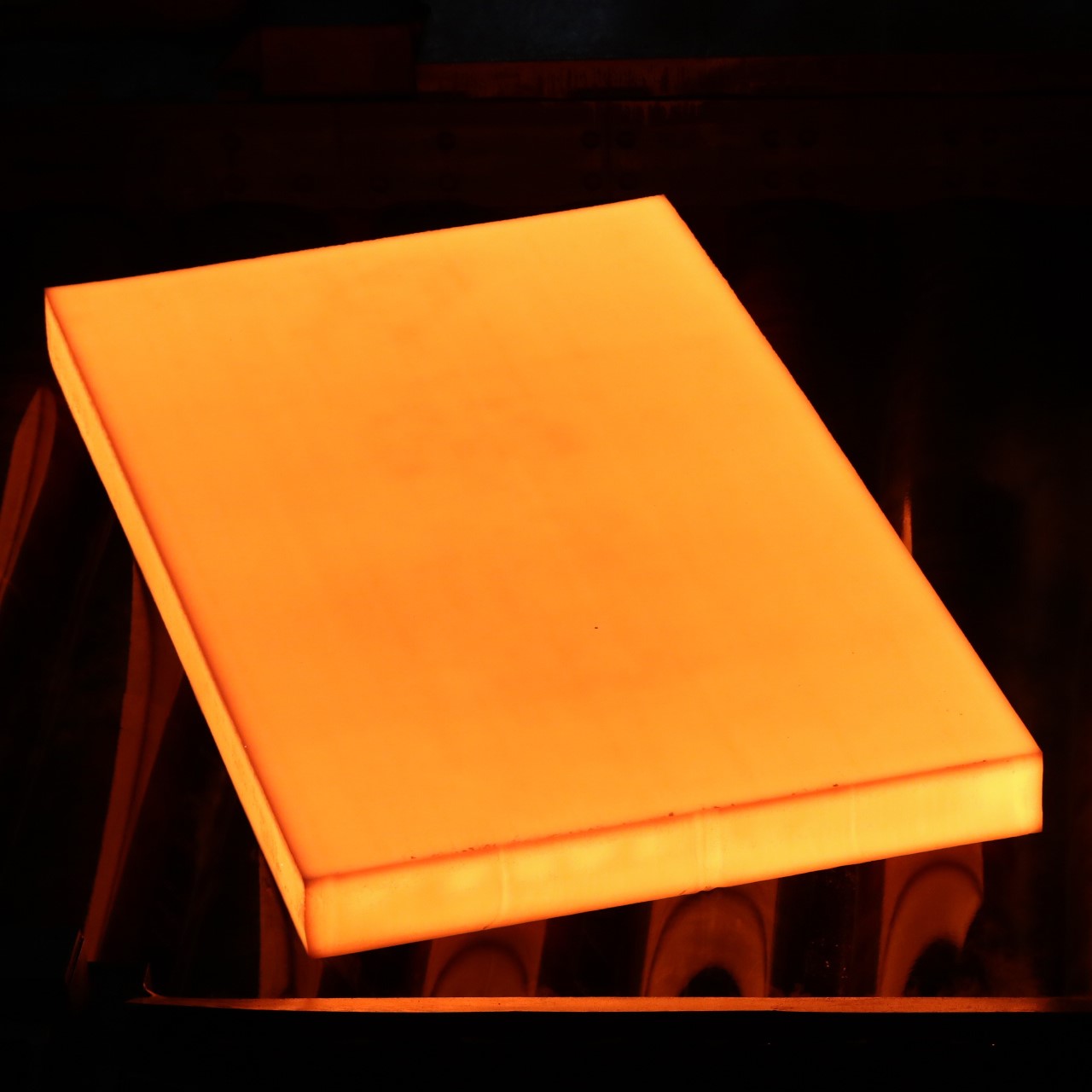ASTM A542/A542M Alloy Steel Plates for Pressure Vessel
ASTM A542/A542M alloy steel plates are high-strength, quenched and tempered materials specifically engineered for use in high-pressure environments such as pressure vessels and boilers. These plates are known for their superior mechanical properties, including excellent tensile and yield strength, as well as good elongation, making them ideal for applications that demand robust performance under extreme conditions. The chemical composition of ASTM A542 plates, which includes elements like carbon, manganese, chromium, and molybdenum, ensures exceptional toughness and resistance to thermal stress. Widely used in the chemical and petrochemical industries, as well as in nuclear and thermal power plants, these steel plates are designed to maintain structural integrity and safety in demanding environments, providing reliable and durable solutions for critical applications.
Chemical Composition of ASTM A542/A542M Alloy Steel Plates for Pressure Vessel
| Element |
Type A |
Type B |
Type C |
Type D |
Type E |
| Carbon |
0.15 max |
0.11-0.15 |
0.10-0.15 |
0.11-0.15 |
0.10-0.15 |
| Manganese |
0.30-0.60 |
0.30-0.60 |
0.30-0.60 |
0.30-0.60 |
0.30-0.60 |
| Phosphorus |
0.025 max |
0.015 max |
0.025 max |
0.015 max |
0.025 max |
| Sulfur |
0.025 max |
0.015 max |
0.025 max |
0.010 max |
0.010 max |
| Silicon |
0.50 max |
0.50 max |
0.13 max |
0.10 max |
0.15 max |
| Chromium |
2.00-2.50 |
2.00-2.50 |
2.75-3.25 |
2.00-2.50 |
2.75-3.25 |
| Molybdenum |
0.90-1.10 |
0.90-1.10 |
0.90-1.10 |
0.90-1.10 |
0.90-1.10 |
| Copper |
0.40 max |
0.25 max |
0.25 max |
0.20 max |
0.25 max |
| Nickel |
0.40 max |
0.25 max |
0.25 max |
0.25 max |
0.25 max |
| Vanadium |
0.03 max |
0.02 max |
0.20-0.30 |
0.25-0.35 |
0.20-0.30 |
| Titanium |
– |
– |
0.015-0.035 |
0.030 max |
– |
| Boron |
– |
– |
0.001-0.003 |
0.0020 max |
– |
| Columbium |
– |
– |
– |
0.07 max |
0.015-0.070 |
| Calcium |
– |
– |
– |
0.015 max |
0.0005-0.0150 |
Mechanical Properties of ASTM A542/A542M Alloy Steel Plates for Pressure Vessel
| Class |
Tensile Strength (ksi) [MPa] |
Yield Strength (ksi) [MPa] |
Elongation in 2 in. (50 mm) (%) |
| Class 1 |
105-125 [725-860] |
85 [585] |
14 |
| Class 2 |
115-135 [795-930] |
100 [690] |
13 |
| Class 3 |
95-115 [655-795] |
75 [515] |
20 |
| Class 4 |
85-110 [585-760] |
55 [380] |
20 |
| Class 4a |
85-110 [585-760] |
60 [415] |
18 |
Specification
| Standard |
ASTM A542/A542M Alloy Steel Plates for Pressure Vessel |
| Steel Grade/Material |
A, B, C, D, E |
| Dimension |
T 5-350mm × W 900-4100mm × L 3000-25000mm |
| Packing |
Packed with steel-framed plywood pallets |
| Supply Conditions |
AR = as-rolled TM = thermo-mechanical controlled processing CR = controlled QT = quenched and tempered N = normalized |
| Place of Origin |
Made in China |
| MOQ |
50 Tons |
| Transportation |
Railway, By Sea |
Applications of ASTM A542/A542M Alloy Steel Plates for Pressure Vessel
Nuclear Reactors: These plates are suitable for use in nuclear reactor vessels and associated components where high strength and good notch toughness at low temperatures are required.
Steam Generators: Alloy steel plates under this specification are used in steam generators for power generation plants, where the pressure and temperature requirements demand materials with excellent weldability and toughness.
Chemical Processing: They are utilized in vessels and reactors for chemical processing industries where corrosive environments and high pressures are present. The alloy composition provides resistance to corrosion and oxidation.
Oil and Gas Industry: In oil refineries and gas processing plants, these plates find application in vessels and storage tanks where the materials must withstand high pressures and potentially corrosive environments.
Pressure Vessels: ASTM A542/A542M plates are specifically designed for pressure vessel applications where the material needs to maintain its integrity under high pressure and varying temperatures.
High-Pressure Service: They are suitable for use in high-pressure hydrogen service applications where hydrogen embrittlement resistance and high strength are critical factors.
Cryogenic Applications: Some grades under this specification are suitable for use in cryogenic applications where low-temperature toughness and weldability are essential.
Shipbuilding: In certain specialized vessels and marine applications, these plates may be used where high strength and corrosion resistance are required.




